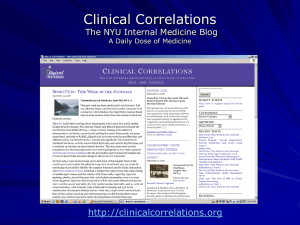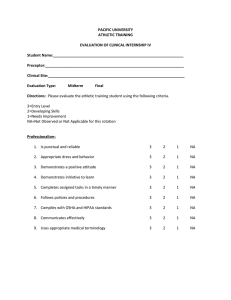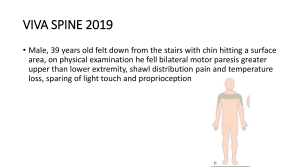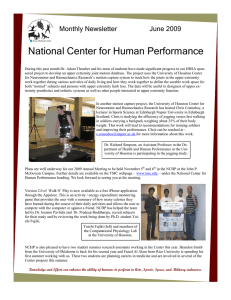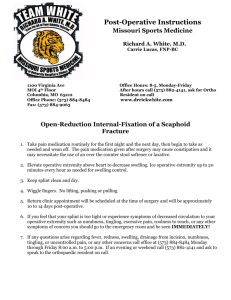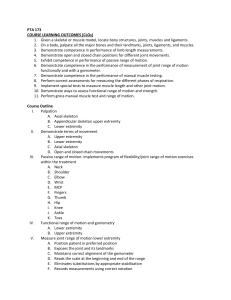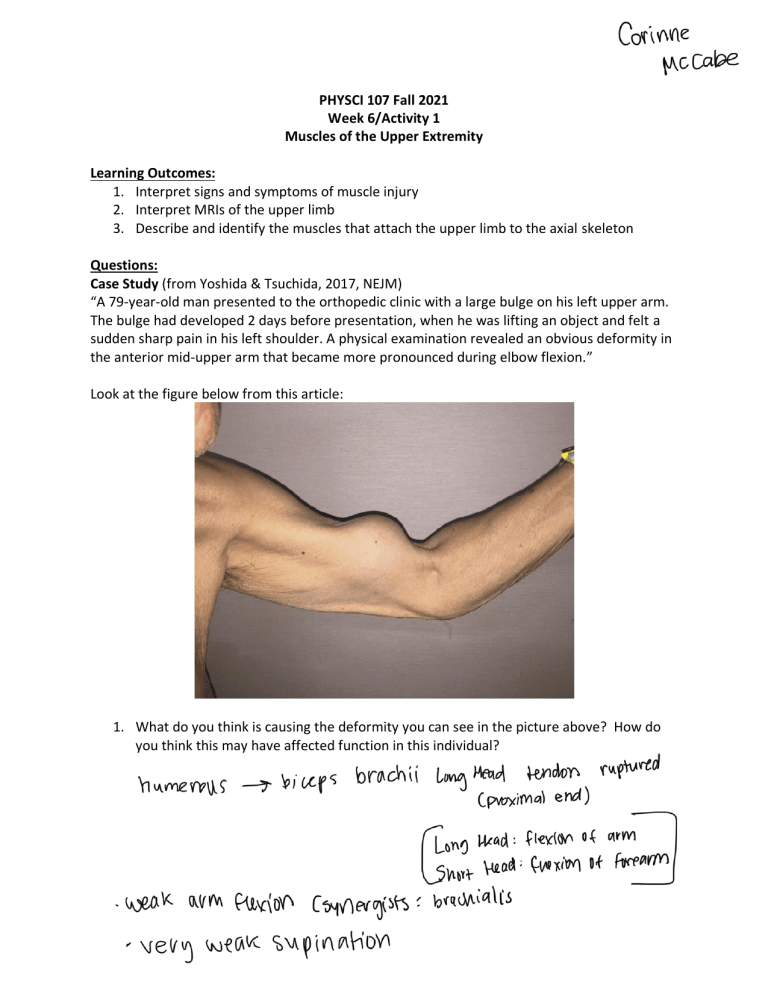
PHYSCI 107 Fall 2021 Week 6/Activity 1 Muscles of the Upper Extremity Learning Outcomes: 1. Interpret signs and symptoms of muscle injury 2. Interpret MRIs of the upper limb 3. Describe and identify the muscles that attach the upper limb to the axial skeleton Questions: Case Study (from Yoshida & Tsuchida, 2017, NEJM) “A 79-year-old man presented to the orthopedic clinic with a large bulge on his left upper arm. The bulge had developed 2 days before presentation, when he was lifting an object and felt a sudden sharp pain in his left shoulder. A physical examination revealed an obvious deformity in the anterior mid-upper arm that became more pronounced during elbow flexion.” Look at the figure below from this article: 1. What do you think is causing the deformity you can see in the picture above? How do you think this may have affected function in this individual? 2. Look at the two MRIs below and identify the indicated structures. A. E. B. F. C. G. D. H. Indicate on the image on the right which direction is anterior. 3. In the diagram below, which shows one side of the torso, with a vertebra, a rib, the clavicle, the scapula and the head of the humerus, indicate the 5 muscles that we’ve discussed which attach the upper limb and pectoral girdle to the axial skeleton POST WORKSHEET FEEDBACK FORM: Please circle the bullet point that best describes how you feel. 1. In your opinion, how well do you understand the concepts associated with the upper extremity? ● Very well: I can solve problems associated with the upper extremity and I can confidently explain the concepts to a peer. ● Somewhat: I can solve problems associated with the upper extremity but cannot confidently explain the concepts to a peer. ● Not very well: I struggle to solve problems associated with the upper extremity ● Not at all: I am unable to start problems associated with the upper extremity. 2. At your current level of understanding, did you feel challenged by the questions on this problem set? ● No: I was able to answer the questions and explain the concepts without any hesitation. ● Somewhat: I was able to understand some of the main concepts, but there were some questions that I still struggled with. ● Yes: I did not know how to approach or answer most of the questions. 3. Did interacting with your LA help improve your conceptual understanding of the upper extremity? ● Yes, very well: My LA provided many examples and/or questions to help me understand the concepts. ● Yes, somewhat: My LA provided some examples and/or questions to help me understand the concepts. ● Yes, not very well: My LA provided one example and/or question to help me understand the concepts. ● Not at all: My LA did not provide any examples and/or questions to help me understand the concepts.
